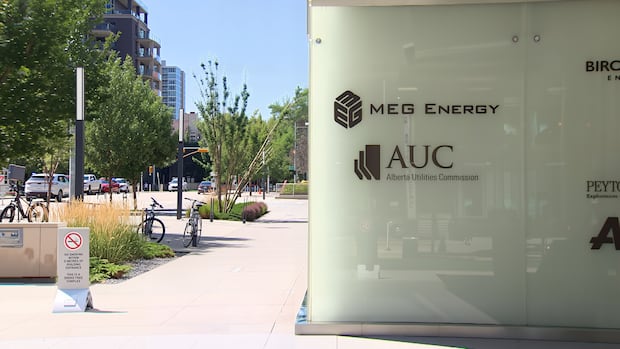Listen to this article
Estimated 5 minutes
The audio version of this article is generated by text-to-speech, a technology based on artificial intelligence.
A handful of proposed expansions to major pipelines in the country could noticeably increase the amount of oil that can be exported out of Western Canada. In total, they add up to the equivalent to constructing a large brand new pipeline.
Enbridge is proposing four different expansions to its pipeline system, which is the largest in the country.
The Calgary-based company announced a final investment decision on Friday to proceed with the first phase, which will cost $1.4 billion US to add 150,000 barrels per day of capacity on its Mainline system and an additional 100,000 barrels per day to its Flanagan South pipeline. The project should be completed in 2027.
"We see supply kind of gradually growing," and these pipeline expansions are meeting that need, said Colin Gruending, Enbridge's president of liquids pipelines, while speaking to reporters on Friday.
 Prime Minister Mark Carney raised the prospect of re-visiting the Keystone XL oil pipeline, during his conversations with U.S. President Donald Trump at the White House in October. (Kyle Bakx/CBC)
Prime Minister Mark Carney raised the prospect of re-visiting the Keystone XL oil pipeline, during his conversations with U.S. President Donald Trump at the White House in October. (Kyle Bakx/CBC)These proposals come at a time when Alberta is pursuing its own pipeline project and there are renewed discussions about resurrecting the failed Keystone XL pipeline.
There are also concerns about pipelines filling up completely in the next few years, as oil production continues to rise to new record highs. When export pipelines reach their capacity, there can be an oil backlog, causing prices for Canadian crude to fall and lowering royalties for governments.
'That should do it'Meanwhile, Trans Mountain is proposing two different improvements to its pipeline from Edmonton to a Vancouver-area port. The pipeline's physical size won't change, but the Crown corporation is exploring using drag-reducing agents to increase the amount of oil that can be transported. A second project would look at building stronger pumping stations to push more oil through the pipe.
All combined, there shouldn’t be any concern of export limitations, said Gruending, even as oil companies keep producing more oil in Alberta.
“The way we see the base case kind of unfolding is a combination of Enbridge optimizations and Trans Mountain optimizations. We’ll take care of that,” he said. “We think that should do it. And it's totally OK to have a little more egress than supply.”
Down the road, more improvements are always a possibility, he said.
“We have further optimizations to take care of that, like we have for 75 years. I think we've expanded the system hundreds of times."
 A list of proposed oil export pipeline expansions are listed in a report by TD Cowen, which also includes two possible new pipelines under the 'Blue Sky' scenario. (TD Cowen)Spare space
A list of proposed oil export pipeline expansions are listed in a report by TD Cowen, which also includes two possible new pipelines under the 'Blue Sky' scenario. (TD Cowen)Spare spaceCurrently, the country’s export pipelines are filling up and could max out by fall of 2028, according to a recent report by TD Cowen. However, improving existing pipelines could create spare export capacity for several more years.
“Expedited pipeline expansions could push this into the mid-2030s, but timelines already feel tight and visibility remains low,” the TD Cowen report states.
All the expansions add up to more than one million barrels per day of additional shipping capacity, according to the TD Cowen report.
Currently, Western Canada produces about 5 million barrels of oil per day. The country has oil export capacity of about 5.2 million barrels per day.
 Alberta Premier Danielle Smith addresses the Global Energy Show in Calgary on June 11. (Kyle Bakx/CBC)Alberta wants more
Alberta Premier Danielle Smith addresses the Global Energy Show in Calgary on June 11. (Kyle Bakx/CBC)Alberta wants moreAlberta Premier Danielle Smith’s recent announcement of a possible provincial government pipeline proposal to the West Coast, as well as discussion about another revival of the Keystone XL pipeline, are both described by TD Cowen as a “blue-sky” scenario since both are hypothetical, highly uncertain and would require several years of development if they actually proceed.
Smith wants a new pipeline to the West Coast to reach world markets and provide plenty of export capacity in the hopes of substantially growing the oil industry in the province.
“To further complicate matters, the concept of resurrecting Keystone XL was also recently raised by Prime Minister Mark Carney with the U.S. President Donald Trump," the report states.
That may show that the country is feeling less confident about its ability to deliver on a new pipeline project, the report says, given its clearly stated goal of otherwise diversifying beyond the U.S.
This week, the International Energy Agency forecast a significant surplus of oil around the globe, with supply potentially exceeding demand by 2.4 million barrels a day this year and four million barrels a day next year, as the U.S., Brazil, Canada and others pump out more oil.
At the same time, the Paris-based agency anticipates global consumption of crude to grow by 788,000 barrels a day this year and 770,000 barrels a day in 2026.
Enbridge is one of the companies providing advice to the Alberta government about its potential pipeline venture, such as testing the viability and business case for a new export project.
“It takes time to develop these. There's many considerations,” said Gruending.
Among the biggest determining factors for a proposal is demand from oil companies, as well as their willingness to sign long-term contracts to use a new pipeline.
For now, when so much new pipeline space is already expected in the years ahead, it’s difficult to know how eager companies will be to commit.











